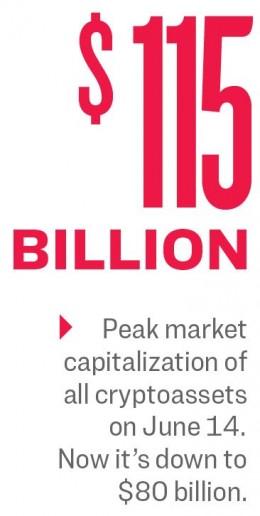With cryptocurrencies having lost $30 billion in market cap in just over two weeks, it’s not only the skeptics who are asking whether the bubble has finally burst.
It’s true that prices have risen parabolically since the beginning of the year, with the value of all cryptocurrencies rising from $17.6 billion on Jan. 1 to $115 billion in mid-June—but this fact alone doesn’t make the sector a bubble.
Big winners in the tech sector that survived the bursting of the year 2000 tech bubble logged returns of 100-fold, although it took them many more years, and their market caps were significantly larger to begin with. Apple, for example, went from a split-adjusted $1 in 2000 to a high of $100 in 2012 before a more prolonged correction.

*





